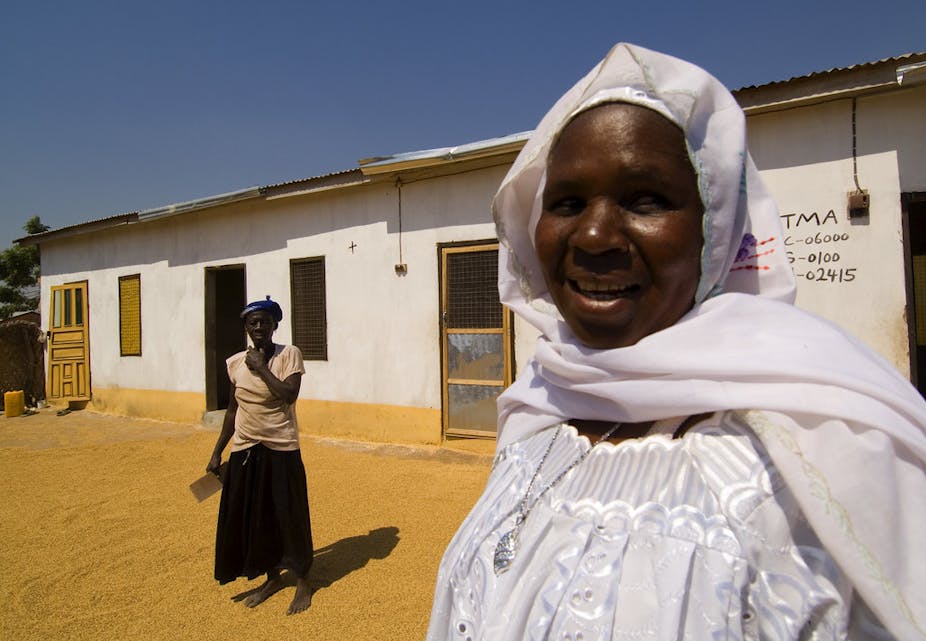Four years after gaining independence, Ghana acknowledged women’s contribution and activism by establishing the National Council of Women in 1960. The purpose of the council was to acknowledge the contribution and activism of women in Ghana’s independence struggle. It was meant to empower and benefit women, for example by establishing vocational training centres and day care centres.
Since then the country has also signed various regional and international protocols with the aim of achieving gender equality.
And in 1979, the government adopted an affirmative action policy to increase women’s participation in government. A quota was set – women were to make up 40% of all state and public boards, councils, commissions and committees.
But the ambitious affirmative action guidelines have yet to yield results. The quota targets have not been met. Six decades after independence, women make up only 13.1% of the members of the legislature.
According to the World Economic Forum’s 2017 Global Gender Gap Report Ghana lags behind other sub Saharan countries such as Rwanda and Namibia. These have achieved 20% or more female parliamentary representation.
The trend is not confined to government. In our research we evaluated gender, equality and inclusion in Ghana. We looked at laws, policies and programmes. And we evaluated what governments, international organisations and civil society groups have done to address gender issues in the work environment.
We found that gender objectives have gained recognition and public policy momentum. And there has been progress, especially in terms of female participation in primary and secondary education as well as female literacy rates. But there are still big gaps. These include the fact that female participation in tertiary education remains low as does employment in professional and technical jobs.
Measuring the gender gap
Our evaluation used the World Economic Forum’s report. It provides a comprehensive estimate of the gender gap in countries using four criteria: economic participation and empowerment; health and survival; educational attainment; and political empowerment.
The gap represents the degree of inequality between men and women. For each criterion there is a list of sub-indicators. For example, the estimate on economic participation and empowerment is derived from a set of indicators. These include: labour force participation rates; wages for similar work; earned income; and the ratio of females to males among legislators, senior officials, managers, and professional and technical workers.
The gender gap is scored between 0 and 1 -– from an absence of equity to complete equity. We looked at both the index scores as well as the rankings. The index report assesses the gap within and across countries. For example, while Ghana is close to equality in healthy life expectancy, the score is not good enough to rank highly among other countries. The absolute score has improved but the score relative to other countries has declined.
When it came to the index scores for Ghana:
The main categories of health and survival and of educational attainment were close to equality (greater than 0.9).
Political empowerment scored poorly for equity (less than 0.5).
Also close to equality were: healthy life expectancy, sex ratio at birth, enrolment in primary and secondary education, share of senior officials and managers, and labour force participation.
The score was poor for years with a female head of state and for women in parliament and in ministerial positions.
When it came to rankings, Ghana was:
In the top 10% worldwide for sex ratio at birth, enrolment in secondary and primary education, senior officials and managers, and labour force participation. These can be linked to active policy decisions to improve educational access and an active gender equity programme in the public sector.
In the bottom 25% worldwide for women in parliament, healthy life expectancy, enrolment in tertiary education, literacy rate, and women in the professional and technical workforce.
The obstacles
These findings show that there are three obstacles for women increasing their representation in Ghanaian society. All are related to the labour force: women have relatively low rates of literacy; low participation in tertiary education; and low participation in professional occupations. For example, the male participation in tertiary education is 2.5 times that of women.
This in turn feeds into low participation for women in professions that require tertiary education qualifications.
According to the African Development Fund 2008, tackling the three inter-related labour market factors would make a dramatic difference to gender parity and to economic development. This is because the educational empowerment of women is linked with a number of better outcomes. These include reduced infant mortality rates and improved access to economic and political leadership opportunities.
There is extensive legislative and international treaty support for women’s rights and empowerment in Ghana. These range from the constitution,through to formal affirmative action programmes for women and the endorsement of International Labour Organisation conventions.
The global equity reports indicate that Ghana’s policy pronouncements recognise this. And that advances have been made in reducing the gender gap across a range of criteria. But major challenges remain.

